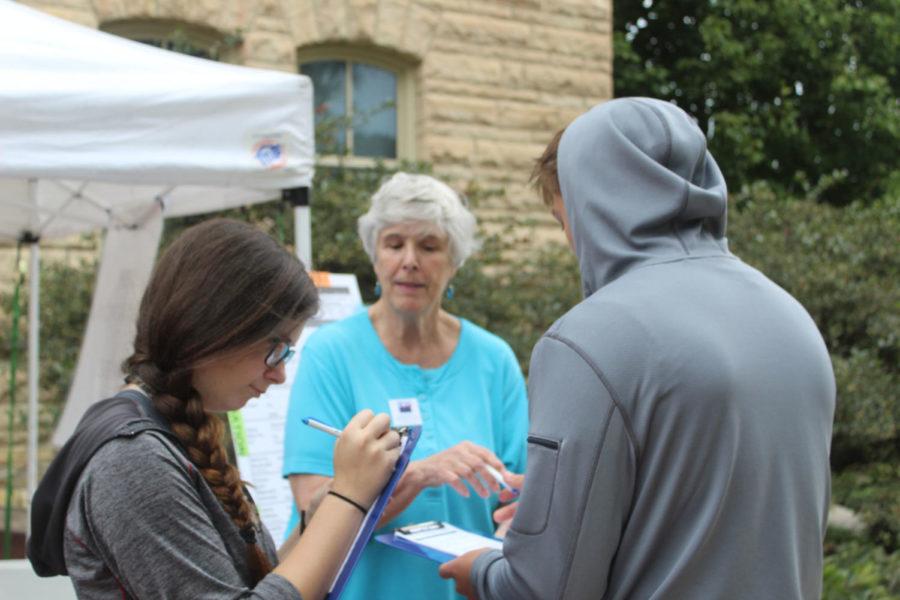Groups work to increase youth vote following 2018 turnout high
Kennedy DeRaedt/ Iowa State Daily
Cheryl Binzen, volunteer for the League of Women Voters, talks to students about voting at Women’s Equality Day on Aug. 26, 2016, outside Catt Hall.
November 11, 2019
Young voters are turning out at the polls in their highest numbers in recent years.
In the 2018 midterm elections, the percent of voters who turned out between the ages of 18-29 was 36 percent, which was 16 percent higher than the 2014 midterms, according to the United States Census Bureau.
“Younger voter turnout basically doubled between the 2014 and 2018 off-year elections, which is largely what helped Democrats and liberal-type candidates do well in 2018,” said Mack Shelley, Iowa State professor and chair of the political science department.
The 2018 midterms produced a Democratic majority in the United States House of Representatives by flipping more than 41 previously Republican seats and bringing in hundreds of new Democratic members of state legislatures.
Younger voters’ participation could help swing elections in a major way, as with the 2018 off-year elections, Shelley said.
“There is a greater diversity of younger voters, and they grew up in a far more diverse culture and society compared to older voters,” Shelley said.
Today, the voting eligible population is almost equal between millennials and baby boomers. 62 million millennials are of eligible voting age, and there are 70 million baby boomers eligible to vote.
“Voting and politics are how our society makes decisions,” said Hector Arbuckle, senior in biology. “If young people were to vote in large numbers, issues like climate change would become a very important issue for politics and politicians.”
In 2018, there was a surge in social media to get youth to vote. Celebrities and social media influencers live-streamed and tweeted to urge young people to vote. Taylor Swift urged her followers to research their candidates and cast their vote.
“Voting turnout for everyone has increased due to many candidates and campaigns […] targeting voters,” said Dave Peterson, professor of political science.
The voter turnout for the 2018 midterm election was 53.4 percent, compared to 41.9 percent in 2014, according to the United States Census Bureau. According to the bureau’s write-up accompanying the data, the jump in turnout among the youngest cohort of voters is in part behind the jump in overall turnout.
“Voting is a habit,” Peterson said. “Once people start voting, they tend to continue voting.”
Organizations such as Humans Rights Campaign, League of Women Voters and many more are tabling, calling and emailing voters to help increase the youth and overall voting turnout for the 2020 election.
Presidential candidates are also targeting younger voters for the 2020 presidential campaign by visiting college campuses and holding events on campuses.
“Younger voters provide the energy and talent that campaigns need to be successful,” Shelley said.
Iowa State students are getting involved with the upcoming election by volunteering with campaigns, learning about the caucus and getting others registered to vote.
“No matter who you are voting for, our campaign team always asks if you are registered to vote and will help you register because no matter who you are, your voice deserves to be heard,” said Ashlyn Dunn, a student volunteer for Sen. Elizabeth Warren’s campaign and freshman in agricultural and life sciences education.
Turning out to vote for primary elections and caucuses is especially important, otherwise candidates are “pre-selected” for voters, Arbuckle said.







